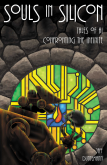I don't buy a lot of music anymore, and in thinking back, I suspect that I stopped buying when I stopped listening to the radio. (I stopped listening to the radio because the stations play the same sixteen stupid songs every twenty minutes…forever. But that's a separate rant.) The tough part in selling anything is discovery—basically, getting the prospective customers to know that you exist—and it becomes a lot tougher when you slide from machine screws to wine, and incomparably tougher yet when you move from wine into the realm of art. Absent radio, I discover new music a lot less often. Here's a recent discovery tale that did lead to a purchase, and if I were the artist I'd be maybe a little annoyed:
Carol and I don't watch a lot of TV, but we turn on the Weather Channel before we go to bed to catch Local on the 8s, and then again in the morning over breakfast. The Weather Channel plays “smooth jazz” during its canned local forecasts. My affection for smooth jazz is sparse, albeit less sparse than my affection for what I call club jazz. No sax please; we're contrarians—I think I dislike sax music because almost everybody else worships it. A few mornings ago, I looked up over my Cheerios to watch Local on the 8s, and realized that there were no saxophones playing. Better still, it was not the usual mournful, shapeless noodling, but a purposeful, upbeat (nay, near-manic) piano piece. Two minutes later, the forecast over and the music cut short by yet another Mucinex mucus man commercial, I ran out of the kitchen to the machine here, muttering, “I gotta have that!”
Alas, the Weather Channel does not announce the artists on its forecast music, so I hammered out a quick email to them, after spending several minutes digging through their site looking for a contact link: Please, folks, what was the title/artist of the bouncy piano piece playing during today's 6:58 AM Local on the 8s?
I only half expected an answer, and was working on memorizing the piece so that I could whistle it to whomever I might know in smooth jazz fandom. But yay wow, by late afternoon, I got a nice note from a Weather Channel junior staffer who confessed that she didn't know precisely, but the February AM playlist was attached. And so it was: The email carried an Excel spreadsheet containing the titles and artists for 15 songs, one of which was by implication the bouncy piano piece. I just didn't know which one.
I had done this kind of detective work a time or two before. I first looked up the artists, separating the pianists from the sax maniacs. It came down to either Leo Tizer or Bradley Joseph. I went over to Amazon, looked up the artists, and started playing the samples for the album tracks named in the playlist spreadsheet. On the third try, I got it: Brandley Joseph's “Rose-Colored Glasses” (and Bradley himself) had been discovered. Ninety seconds later, I had purchased the track through One Click for 89c, and had a DRM-free MP3 in my music directory. Ninety seconds after that, I had his CD album (Hear the Masses) on its way. The friction was all in the discovery.
Amazon supposedly sells two million music tracks as unencumbered MP3s. I shop for music so rarely that I didn't even know this. I did know that Amazon has been selling PDF-formatted short stories (and other short textual works, including nonfiction) for a couple of years now, for 49c a pop. Alas, by the time I decided to apply to the program, they had closed it to new submissions, but the delivery mechanism is the same as for MP3s: If you have One Click enabled, you get the item in a few seconds.
I think Amazon Shorts may have been doomed because Big Name Writers would not sell unencumbered PDFs, and Small Name (or No Name) writers do not sell enough of anything to justify the effort it takes Amazon to vet them and post them. Or perhaps Amazon is simply migrating the program to Kindle. We'll find out eventually. The point to be taken away here is that we have digital delivery down cold. Discovery is fluky and always will be, especially for things like fiction, which (with vanishingly rare exceptions) you do not hear on the radio. Amazon can make the gumballs drop into your hands. We're still not sure how they'll make you want the gumballs, but tougher problems have been solved.
In the meantime, Bradley Joseph has another fan, and might have more if the Weather Channel would just put his name in the corner of the screen while they're playing his music over their forecasts. I hope he got some cash for the license, because not everybody is going to dig as hard as I did!












